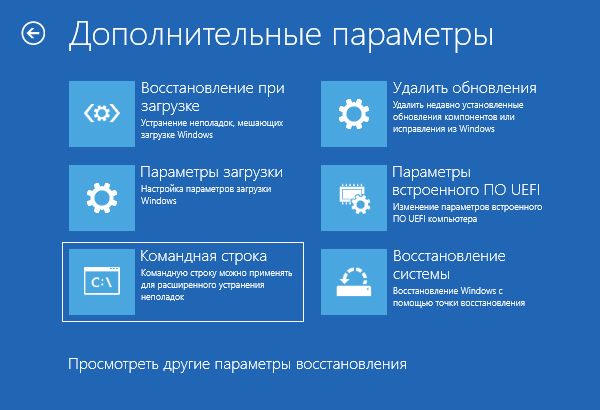Среди распространенных ошибок при запуске проверки и восстановления целостности системных файлов с помощью SFC /scannow сообщение «Защите ресурсов Windows не удается запустить службу восстановления».
В этой пошаговой инструкции подробно о способах исправить ошибку «Защите ресурсов Windows не удается запустить службу восстановления» при выполнении команды sfc /scannow в Windows 11, Windows 10 и предыдущих версиях системы.
Прямое указание пути к sfc.exe в команде
Первый метод решить проблему, не гарантированно работающий, но очень быстрый: указать прямой путь к файлу sfc.exe в команде для запуска проверки и восстановления системных файлов.
Шаги будут следующими:
- Запустите командную строку от имени Администратора, Терминал Windows или Windows PowerShell от администратора также подойдут. Как запустить командную строку Windows 11 от администратора, Как запустить командную строку Windows 10 от администратора.
- Введите команду
C:\Windows\sysNative\sfc.exe /scannow
и нажмите Enter.
С большой вероятностью вы увидите стандартное сообщение «Начато сканирование системы. Этот процесс может занять некоторое время».
Командная строка x86 и x64
В 64-разрядных системах Windows присутствует 32-битные (x86) и 64-битные (x64) версии приложений командной строки и Windows PowerShell. При этом, если в 64-битной системе попробовать выполнить команду sfc /scannow в x86 варианте консоли, вы получите сообщение об ошибке «Защите ресурсов Windows не удается запустить службу восстановления».

При использовании стандартных средств Windows для запуска командной строки от имени администратора, почти всегда запускается «нужная», x64 версия. Однако, при использовании запуска из сторонних средств: какого-либо виджета, стороннего файлового менеджера, может быть запущена 32-битная x86 версия, что и будет являться причиной ошибки.
Если есть предположения о том, что это ваш случай, вы можете:
- Запустить командную строку от имени Администратора средствами Windows (ссылки на способы приведены в первой части этой инструкции).
- Зайти в папку C:\Windows\System32 (независимо от разрядности Windows), найти файл cmd.exe, нажать по нему правой кнопкой мыши и выбрать «Запуск от имени администратора», выполнить команду sfc /scannow
Запуск служб Установщик модулей Windows и Установщик Windows
В случае, если в системе отключены необходимые службы, sfc /scannow также может сообщать о рассматриваемой ошибке. Проверить службы и включить их можно следующим образом:
- Откройте «Службы». Для этого нажмите клавиши Win+R на клавиатуре, введите services.msc и нажмите Enter.
- В списке служб найдите «Установщик Windows» и «Установщик модулей Windows».
- Дважды нажмите по имени службы, чтобы открыть её свойства. По умолчанию для этих служб в «Тип запуска» должен быть установлен в значение «Вручную». Если это не так — измените тип запуска и примените настройки. В этом же окне можно вручную запустить службы с помощью соответствующей кнопки (кнопка не активна, если тип запуска — «Отключена»).
- После применения всех настроек снова запустите командную строку от имени администратора и попробуйте выполнить команду sfc /scannow
Исправление букв дисков при выполнении команды
Если ошибка «Защите ресурсов Windows не удается запустить службу восстановления» возникает при выполнении команд вида:
sfc /scannow /offbootdir=C:\ /offwindir=C:\Windows
с загрузочного накопителя, причиной этого может быть то, что буквы разделов диска при загрузке с флешки отличаются и в результате папка Windows находится не на привычном диске C. Способ определить актуальную букву системного диска:
- В командной строке по порядку вводим команды
diskpart list volume
- Отобразится список разделов с текущими буквами, где мы и можем посмотреть букву системного раздела, чтобы в дальнейшем использовать в командах sfc
- В некоторых случаях системный раздел может не иметь буквы. В этом случае её можно назначить командами (здесь N — номер системного тома, а Z — назначаемая буква):
select volume N assign letter=Z
- По завершении работы с diskpart введите команду exit
Запуск проверки целостности системных файлов в среде восстановления
Если ни один из способов выше не сработал, попробуйте выполнить команду в командной строке среды восстановления Windows 11 или Windows 10:
- Зайдите в среду восстановления — Как зайти в среду восстановления Windows 11, Как зайти в среду восстановления Windows 10.
- Перейдите в раздел Поиск и устранение неисправностей — Дополнительные параметры — Командная строка.
- Запустите сканирование sfc /scannow
Запуск sfc /scannow с загрузочной флешки
Если у вас есть загрузочная флешка с вашей версией Windows или возможность создать её, можно использовать команду sfc /scannow с неё. Для этого:
- После загрузки компьютера с флешки, нажмите клавиши Shift+F10 (на некоторых ноутбуках — Shift+Fn+F10) откроется командная строка.
- В командной строке используйте команду
sfc /scannow /offbootdir=C:\ /offwindir=C:\Windows
Внимание: при загрузке с флешки буква системного диска может отличаться от C и в этом случае приведенная выше команда также сообщит о том, что защите ресурсов Windows не удается запустить службу восстановления. Чтобы исправить ситуации, прочтите раздел «Исправление букв дисков при выполнении команды» выше в статье.
Безопасный режим
И ещё один вариант, который иногда может сработать, если причина ошибки — какие-либо сторонние службы и процессы, мешающие выполнению команды: попробуйте запуск проверки в безопасном режиме. Здесь могут быть полезными материалы: Как зайти в безопасный режим Windows 11, Как зайти в безопасный режим Windows 10.
Повреждение или удаление системных файлов Windows является основной причиной неполадок в работе операционной системы. Предвидя развитие подобных сценариев, Microsoft реализовала в Windows специальный инструмент — консольную утилиту SFC, способную восстанавливать повреждённые или отсутствующие файлы из хранилища WinSxS, используя для этого базу данных контрольных сумм оригинальных файлов. Утилита может принимать несколько параметров, из которых наиболее часто используемым является /scannow, который в отличие от /veryfyolny передаёт SFC указание не просто проверить файлы, но и восстановить их в случае обнаружения несоответствий.
Позволяя восстанавливать системные файлы, SFC сама не застрахована от ошибок, будучи зависима от работы других компонентов Windows. Так, в некоторых случаях при запуске выполнении команды sfc /scannow вы можете получить сообщение «Защите ресурсов Windows не удаётся запустить службу восстановления».
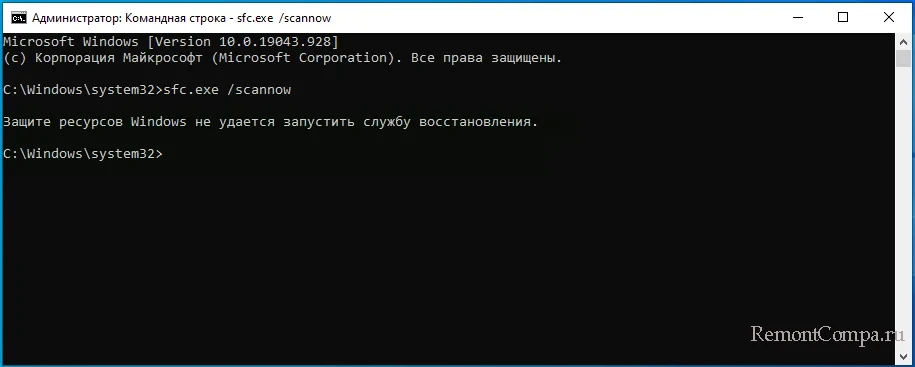
Причины неполадки могут быть разные, но самым распространённой из них являются отсутствие деактивация ряда системных служб. Перейдём, однако, к способам устранения этой ошибки.
Рассмотренный здесь способ не является гарантированно надёжным, применим он только в тех случаях, когда исполняемый файл утилиты SFC располагается в папке, отличной от System32. Например, в служебной папке sysNative, обеспечивающей доступ 32-битным приложениям к 64-битным библиотекам. В этом случае вы можете попробовать запустить сканирование, указав полный путь к исполняемому файлу утилиты SFC. Вот так:
C:\Windows\sysNative\sfc.exe /scannow
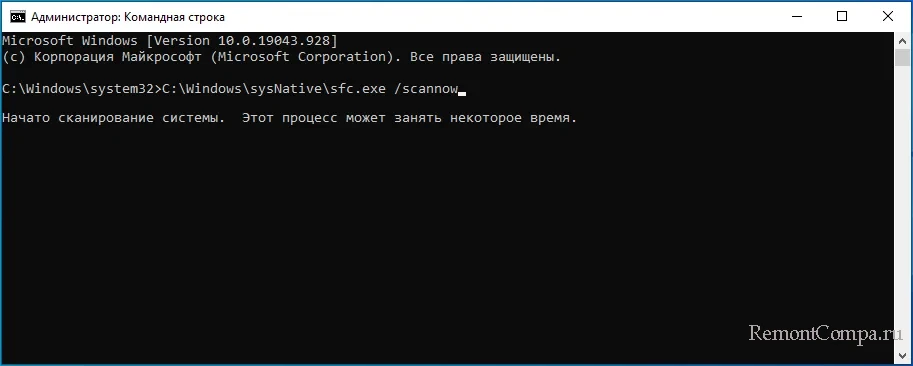
Естественно, командная строка или консоль PowerShell должны быть запущены от имени администратора, так как наличие повышенных прав является обязательным условием работы инструмента восстановления.
В 64-битной системе с ошибкой «Защите ресурсов Windows не удаётся запустить службу восстановления» вы столкнётесь в случае выполнения sfc.exe /scannow из 32-битной версии командной строки или PowerShell, располагающихся в каталоге WinSxS. Поскольку в 64-битной Windows по умолчанию запускаются 64-разрядные версии обеих консолей, такой сценарий является маловероятным, он возможен разве что в том случае, если командная строка или PowerShell запущены из стороннего файлового менеджера. Чтобы исключить данный сценарий, зайдите в папку C:\Windows\System32, запустите из неё файл cmd.exe с правами администратора и выполните в открывшейся командной строке sfc /scannow.
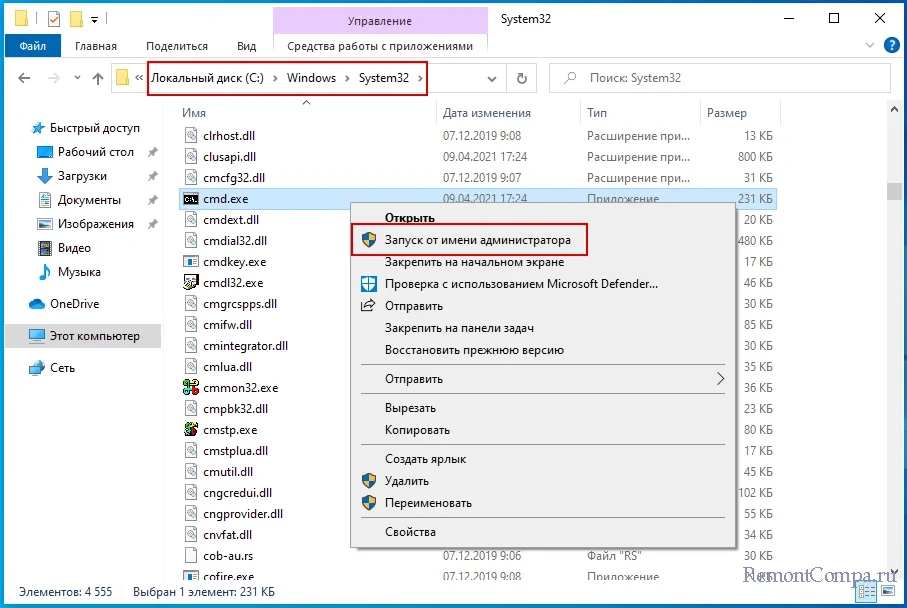
Если описанная выше причины неполадки встречаются достаточно редко, то эта причина, именно деактивация обеспечивающих корректную работу sfc.exe служб является весьма распространённой. Откройте командой services.msc оснастку управления службами и проверьте состояние следующих служб:
• Установщик Windows;
• Установщик модулей Windows.
Для этого открываем их свойства. Обе службы должны находиться в запущенном состоянии и иметь тип запуска «Вручную». Если обе или одна из этих служб отключена или не активна, замените тип запуска на указанной и запустите её одноименной кнопкой, после чего повторите выполнение команды sfc /scannow.
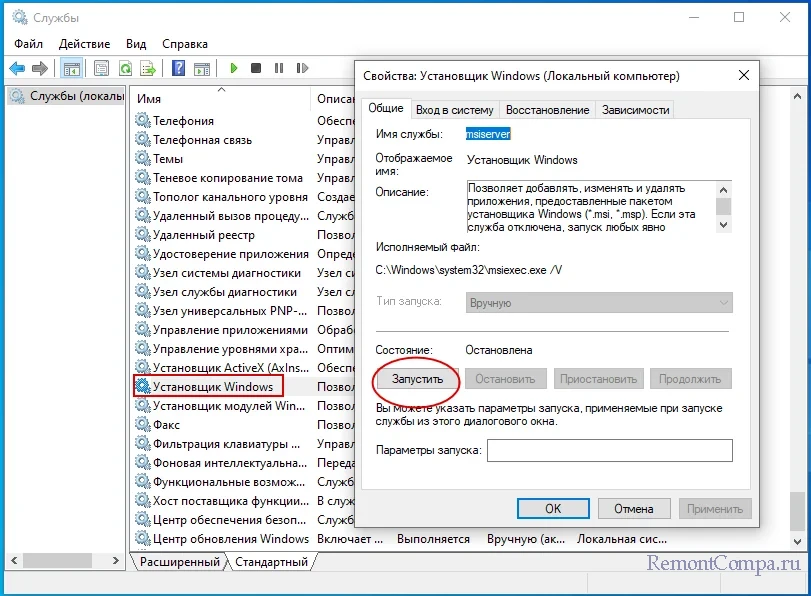
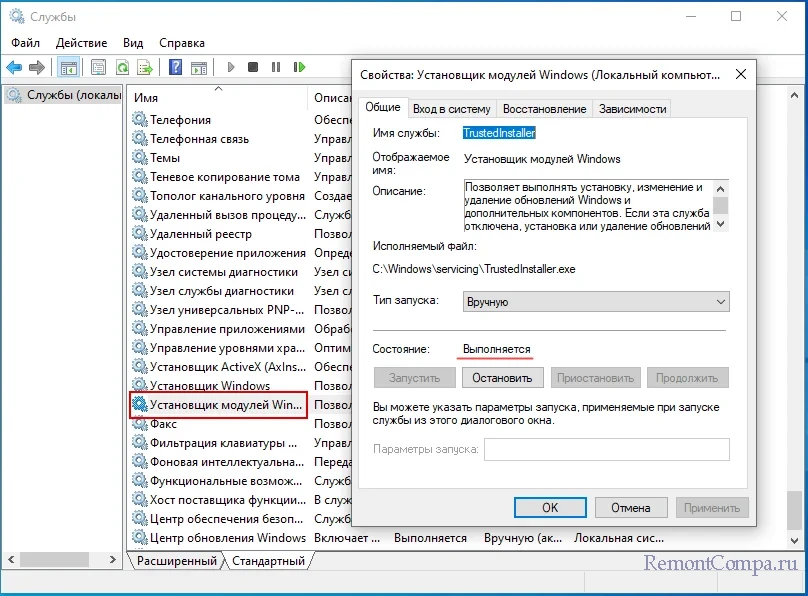
Если выполнить сканирование в работающей системе не удалось, и при этом вы не смогли установить причину неполадки, можете попробовать запустить SFC из среды восстановления, воспользовавшись для этого загрузочным диском и исключив тем самым влияние внутренних факторов. Напоминаем только, что синтаксис команды в загрузочной среде будет несколько отличаться. Помимо /scannow, к команде нужно будет добавить два дополнительных параметра, передав им в качестве аргумента букву системного тома и путь к папке Windows:
sfc /scannow /offbootdir=C:\ /offwindir=C:\Windows
Поскольку в загрузочной среде буквы дисков могут отличаться, перед выполнением команды сканирования рекомендуем уточнить буквы томов. Выполнив в командной строке команду notepad и открыв тем самым Блокнот, перейдите в меню «Файл» → «Сохранить как» и посмотрите в открывшемся Проводнике букву раздела с операционной системой, то есть того раздела, на котором находится папка Windows.
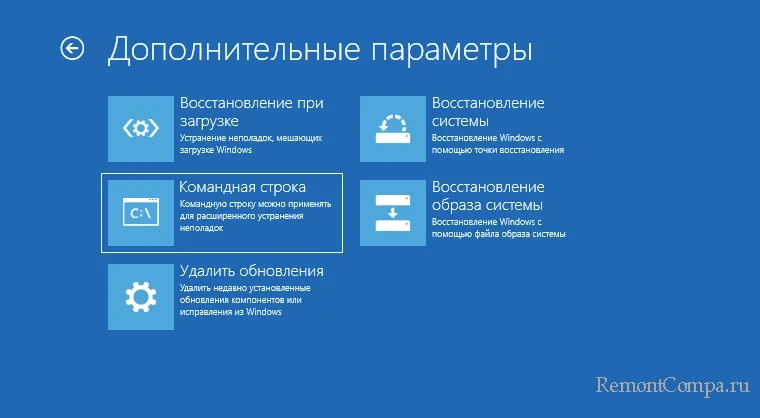
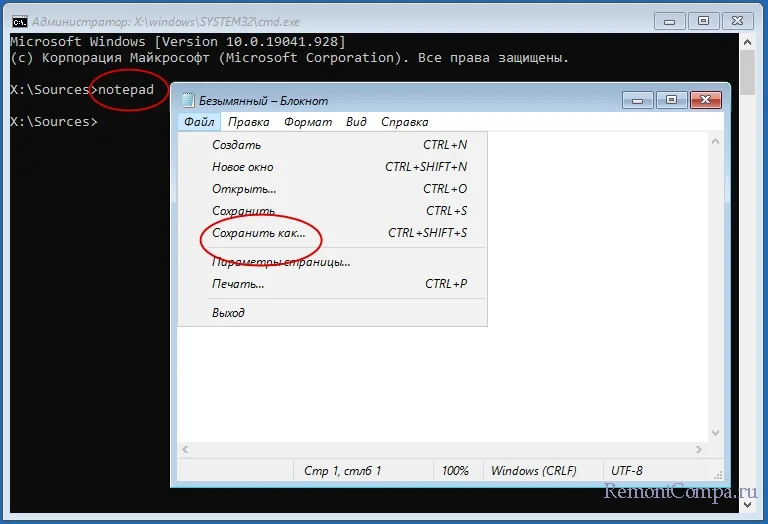
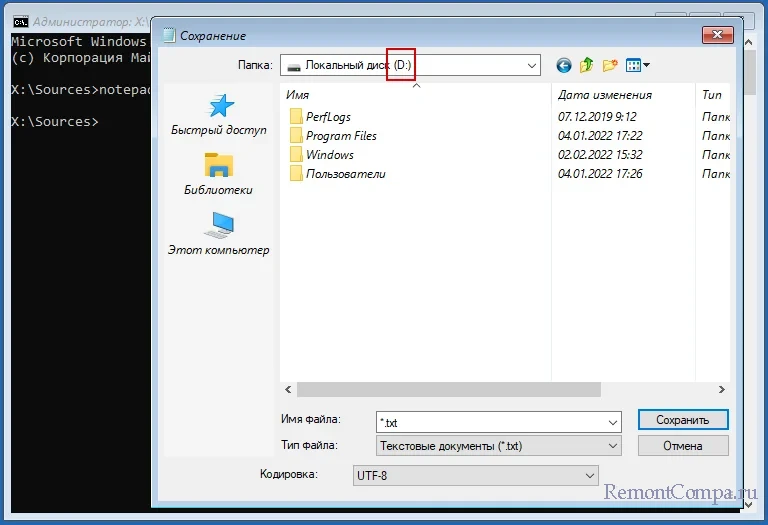
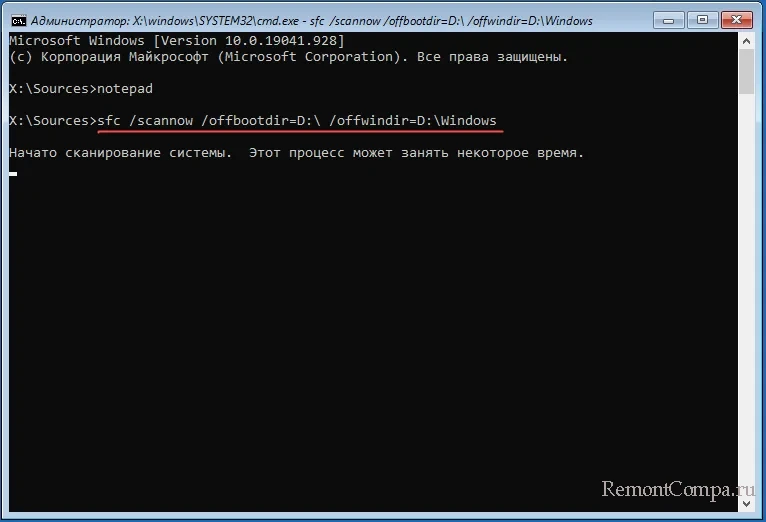
Впрочем, запуск восстановления файлов из среды WinPE это крайнее решение, для начала можно попробовать запустить проверку, загрузившись в безопасном режиме. Инструкции по входу в среду восстановления и загрузке в безопасном режиме не даём, так как на нашем сайте имеется достаточно статей, в которых эта тема освещалась более чем подробно.
How to Fix the «Windows Resource Protection could not start the repair service» Error on Windows 10
System File Checker (SFC) is a utility in Windows that allows users to scan for corrupt Windows system files and restore them. Unfortunately, you may get the «Windows Resource Protection could not start the repair service» error when running the «SFC /Scannow» command. This article will show you how to fix this problem.

Windows Resource Protection (WRP) prevents the replacement of essential system files, folders, and registry keys part of the operating system. Permission for full access to modify WRP-protected resources is restricted to TrustedInstaller.
WRP-protected resources can only be changed using the Supported Resource Replacement Mechanisms with the Windows Modules Installer service.
TrustedInstaller is a process belonging to the Windows Modules Installer service in Windows 10, 8, 7, and Vista. Its primary function is to enable installing, removing, and modifying Windows Updates and optional system components.
Sometimes TrustedInstaller.exe may become corrupted, and you may get an error message. In such a case running the System File Checker may help.
However, sometimes, even the Windows Resource Protection service, which runs the System File Checker (SFC), is affected. In such a case, if you try to run the «sfc /scannow» command, you may get the error message saying: «Windows Resource Protection could not start the repair service».
Read the guide below to fix the «Windows Resource Protection could not start the repair service» error while trying to run the System File Checker.
Video Showing How to Fix the «Windows Resource Protection could not start the repair service» Error:
Table of Contents:
- Introduction
- Enable Windows Modules Installer Service
- Run System File Checker in Safe Mode
- Run DISM Scan
- Video Showing How to Fix the»Windows Resource Protection could not start the repair service» Error
Download Computer Malware Repair Tool
It is recommended to run a free scan with Combo Cleaner — a tool to detect viruses and malware on your device. You will need to purchase the full version to remove infections. Free trial available. Combo Cleaner is owned and operated by Rcs Lt, the parent company of PCRisk.com read more.
Enable Windows Modules Installer Service
Windows Services (also known as services.msc), are used to modify how Windows services run on your system. You can modify a service’s settings for security, troubleshooting, and performance-related reasons.
You will need to access the Windows Installer service, which enables installation, modification, and removal of Windows updates and optional components. If this service is disabled, install or uninstall of Windows updates might fail for your computer.
To access the Windows Modules Installer service type «run» in Search and click the «Run» result.

In the Run dialog box, type «services.msc» and click «OK» to open Windows Services.

Now scroll down through the services list to find the «Windows Modules Installer» service. Right-click it and select «Properties» in the dropdown menu. Or simply double-click the Windows Modules Installer service.

Make sure that «Startup type» is set to «Manual». If it is not set to Manual, then set it this way and click «Apply» to save the changes made.
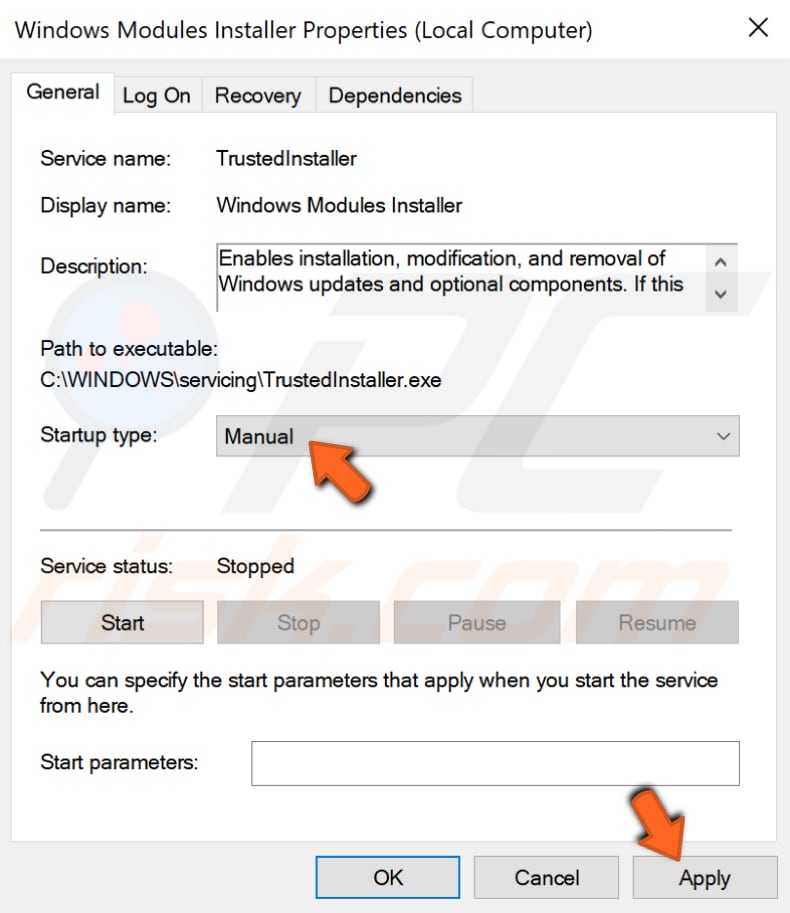
You can also try to enable the TrustedInstaller using Command Prompt and its commands. Some commands available in Windows require that you run them from an elevated Command Prompt. This means you have to be running it with administrator-level privileges.
To open Command Prompt, type «command prompt» in Search and then right-click on the «Command Prompt», select «Run as administrator» from the dropdown menu to run Command Prompt with administrator privileges.

Now you will need to execute a couple of commands. Type «sc config trustedinstaller start=demand» and press Enter on your keyboard.
Then type «net start trustedinstaller», and press Enter on your keyboard again.
Now try to run the System File Checker and see if you are still getting the «Windows Resource Protection could not start the repair service» error.
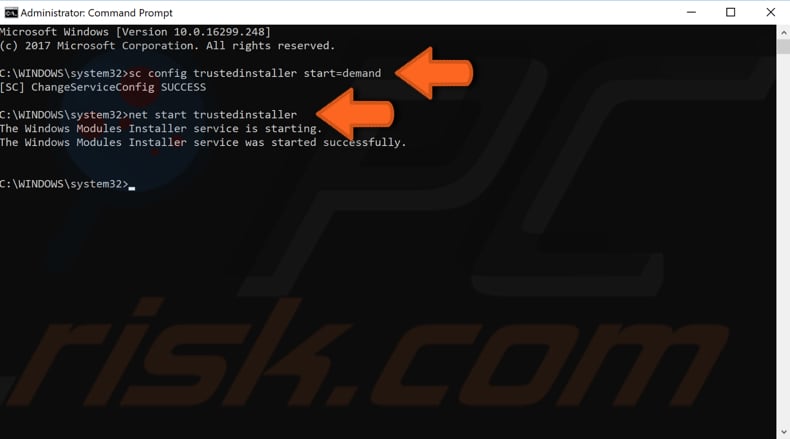
[Back to Table of Contents]
Run System File Checker In Safe Mode
Another thing you might want to try is to run the System File Checker in Safe Mode. Safe Mode is a diagnostic start-up mode in Windows operating systems used to obtain limited access to Windows when the operating system does not start or function normally.
If you are not sure how to start your Windows in Safe Mode, read this article.
[Back to Table of Contents]
Run DISM Scan
DISM stands for Deployment Image Servicing and Management, and it can be used to repair and prepare Windows images, including the Windows Recovery Environment, Windows Setup, and Windows PE.
To run DISM scan, you need to open Command Prompt as administrator again and type in this command: «DISM /Online /Cleanup-Image /RestoreHealth». Press Enter on your keyboard to execute it.
See if this fixes the «Windows Resource Protection could not start the repair service» error while trying to run the System File Checker.

We hope this article was helpful in trying to fix the «Windows Resource Protection could not start the repair service» error, and now you can run the System File Checker without any problems. Do not hesitate to write a comment in the comment section below if you found another workaround for this error!
[Back to Top]
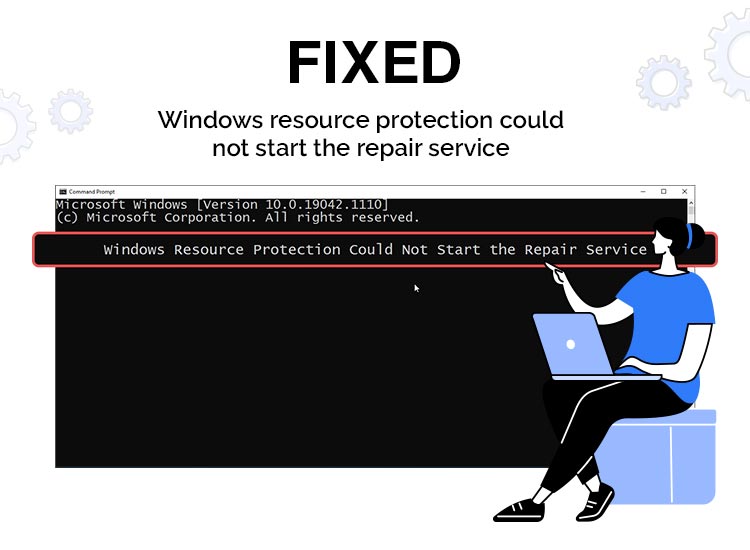
Are you trying to execute the System File Checker (sfc /scannow) but suddenly encounter the “Windows Resource Protection could not start the repair service” error message? If you are one of them, then this post is for you. Here, you will learn how to fix this error.
The System File Checker is an extremely useful tool that millions of users use to resolve system-wide problems by replacing files that have become corrupted or missing. It has the ability to automatically identify and repair system files that are causing problems for your computer. However, what should you do if the feature that is supposed to fix your problems also needs to be fixed? It seems intimidating, right?
Users all over the place have been complaining that they received an error message saying that Windows resource protection could not start repair service when they attempted to run the “sfc /scannow” command. To resolve this annoying error and successfully run the System File Checker without any issues, there are a few fixes you can try. But first, let’s understand what exactly the cause of this problem is.
Why Is the SFC Scan Not Working?
Windows comes with a built-in tool called System File Checker (SFC) that helps you replace corrupted system file versions with the right ones, solving a lot of issues. The functionality of TrustedInstaller is required for the System File Checker to operate as intended. Windows updates and other system components cannot be installed, modified, or removed without the use of TrustedInstaller.
It manages Windows Resource Protection (WRP), which guards against unauthorized changes to registry values, system files, and other data. The services that rely on the TrustedInstaller, such as SFC and WRP, stop working when they malfunction or are disabled, and you might receive the sfc /scannow windows resource protection could not start the repair service error. You can resolve this irritating error, “Windows Resource Protection could not start repair service,” by following the quick & simple steps we have provided in this blog post.
How To Fix Error “Windows Resource Protection Could Not Start the Repair Service”
There are several fixes that you can use if you are experiencing problems getting the System File Checker to function and scanning your device for missing or corrupted files. Let’s find out some of the most effective ways.
Method 1. Start the TrustedInstaller (Windows Modules Installer).
Starting the necessary service manually is the easiest way to solve this problem. It is crucial to set up the Windows Modules Installer so that it will launch every time the SFC scan is launched. To troubleshoot this error, you can follow the steps listed below.
- Use the keyboard shortcuts Windows + R to open Windows. This will launch the Run application.
- Enter services.msc, then press the OK button. The Services window will now open, and it may take some time to load completely.
- Choose Properties from the menu by right-clicking on the Windows Modules Installer service.
- Select “manual” as the startup type. Click the Start button to launch the service if it is not already running. Choose Apply, and then OK. You should have returned to the list of services.
- Try executing the “sfc /scannow” command once again after closing the Services window. Proceed to the next solution if the scan is still unsuccessful and you still encounter the Windows resource protection could not start the repair service error.
Method 2. Try to Execute the System File Checker in Safe Mode.
It is possible that the System File Checker is malfunctioning due to interference from a background program or service. In this situation, you could try just running the scan command in safe mode. When your computer boots up in safe mode, only the essential Windows components are active.
- Use the keyboard shortcuts Windows + R to open Windows. This will launch the Run application.
- Enter “msconfig” using the keyboard’s Enter key after typing it without the quote marks. By doing this, the System Configuration application will open.
- Navigate to the Boot tab. Click OK after selecting Safe Boot and maintaining the Minimal setting under Boot options.
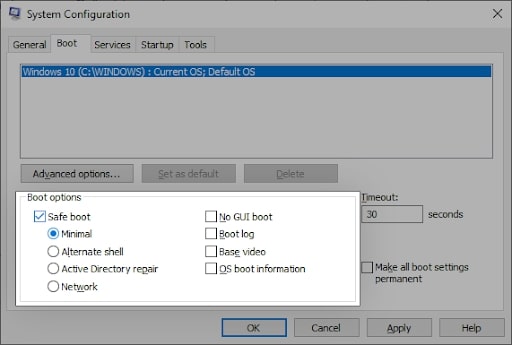
- Restart the computer. All necessary services should be started during the safe mode boot, free of any third-party applications.
- Try running the sfc /scannow command in the Command Prompt to see if the SFC scan is functioning or not. If you still face the sfc /scannow windows resource protection could not start the repair service error, proceed to the next fix.
Also know: How to Set Up USB Game Controllers in Windows 11/10
Method 3. Use the Command Prompt To Start TrustedInstaller
The only difference between this method and the first is that it is executed within a command prompt. Since you require administrator permissions to make the change, there is a chance that this solution will work.
- Click the magnifying glass icon to bring up the search bar in your taskbar. Alternatively, you can use the Windows + S keyboard shortcut to open it.
- In the search bar, enter cmd or Command Prompt. Right-click on it and select “Run as Administrator” when you see it in the results.
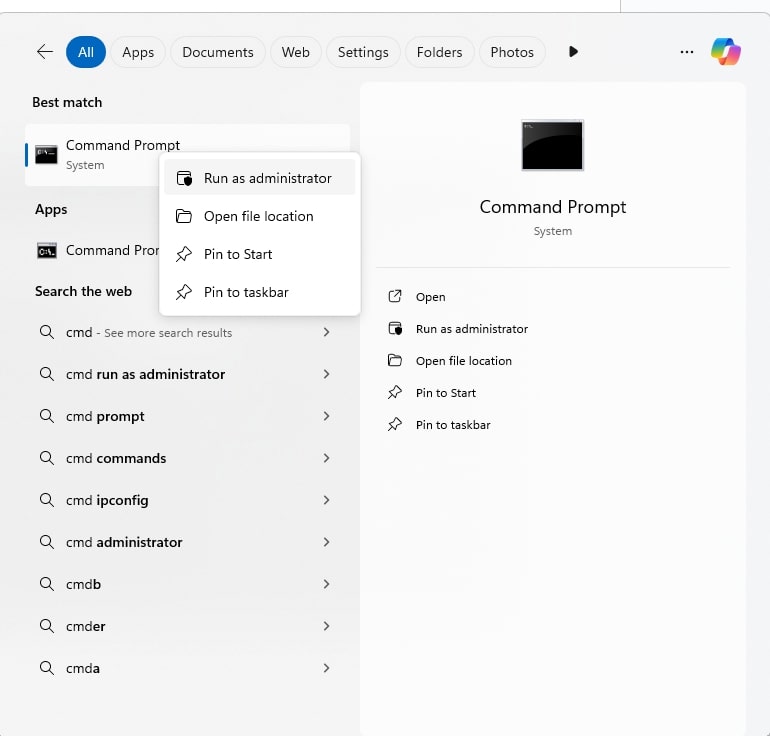
- Click Yes to give the app administrator permissions when User Account Control (UAC) prompts you.
- After launching the Command Prompt window, enter the below command and press Enter to run it: sc config trustedinstaller start= auto. The SUCCESS message should appear if the command is successful.
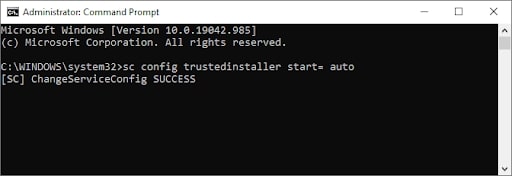
- Run the following command after that: net start trustedinstaller. There should be a message indicating that the Windows Modules Installation service has started successfully.
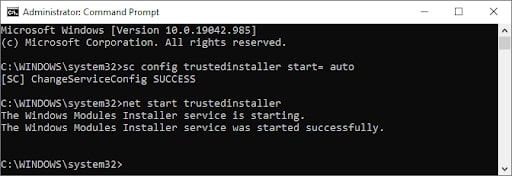
- Using the sfc /scannow command, you can now attempt to launch the System File Checker. If you are still having trouble running it or encountering the Windows resource protection could not start repair service error, try the alternate method listed below.
Method 4. Run the DISM Command
According to some users, the System File Checker issue was fixed by using the DISM command. To resolve issues directly related to your system image, use the Deployment Image Servicing and Management (DISM) tool to redeploy it. You can find the detailed instructions for running this scan below.
- Click the magnifying glass icon to open the taskbar search bar. Alternatively, you can use the Windows + S keyboard shortcut to open it.
- In the search bar, type Command Prompt or cmd. Right-click on it and select Run as Administrator when you see it in the results.
- If User Account Control (UAC) asks you to confirm the app’s launch with administrator rights, select Yes.
- Once the Command Prompt window has opened, enter the command and press Enter to run it: DISM /Online /Cleanup-Image /RestoreHealth
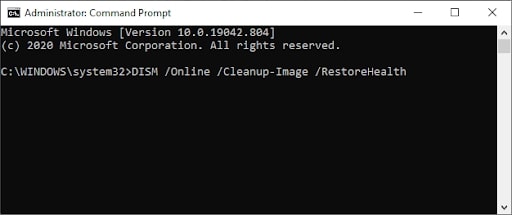
- After the scan is finished, restart your computer. Try running the SFC scan when you return to the Command Prompt to see if it now functions. If you still encounter the sfc /scannow windows resource protection could not start the repair service error, proceed to the next method.
Method 5. Manually Fixing the Registry
This method needs to be used carefully because making the wrong registry change can lead to problems:
- To open the Windows registry, press Windows + R to open the Run window, type regedit, and hit Enter.
- Navigate to the following registry link: HKEY_LOCAL_MACHINE\SOFTWARE\Microsoft\Windows\CurrentVersion\Component Based Servicing\Version:
- To edit the registry values, right-click on the relevant keys (if unsure, seek professional assistance).
- To add an Expandable String Value, right-click on the Version and select New.
- Change the value’s name to correspond with your TrustedInstaller ID. It will look something like this after renaming: 10.0.19041.1XXX.
- Double-click the newly created value, and then copy and paste the folder path found in WinSxS into the Value data field. The value data field should now resemble this:
%SystemRoot%\winsxs\amd64_microsoft-windows-servicingstack_31bf3856ad364e35_10.0.19041.1XXX_none_7e3d47227c694b34.
- Verify that you are using %SystemRoot% correctly and that the folder path does not include “C:\Windows.” To save the changes, click “OK.”
- Restart your computer now to check if the sfc /scannow windows resource protection could not start the repair service problem has been fixed.
Also know: How to Enter BIOS Setup Utility and Check BIOS Version in Windows
Windows resource protection could not start the repair service Error: Fixed
Resolving the “Windows Resource Protection Could Not Start The Repair Service” issue requires a combination of troubleshooting techniques and the utilization of built-in Windows utilities. By following the steps outlined in this article, you can successfully address this error and restore the proper functionality of their system.
It is essential to approach the resolution process systematically, ensuring that each step is carefully executed to achieve the desired outcome. Remember to always back up critical data before making any significant system changes and to seek professional assistance if needed. If you have any questions or concerns, please use the comments section to contact us.
System files are necessary for your Windows to operate and run properly. If these system files go corrupted, missing, or damaged, your PC may run into errors. Such errors are usually fixed by running the SFC (System File Checker) scan. But what if you face issues while running this scan?
‘Windows Resource Protection could not start the repair service’ is an error that occurs while you try to run the ‘SFC/Scannow’ command. The error is majorly caused by a malfunctioning or disabled TrustedInstaller.
Why is SFC throwing the ‘Windows Resource Protection Could Not Start the Repair Service’ Error?
System File Checker (SFC) is a Windows built-in tool that helps replace damaged system file versions with the correct ones, thereby fixing many problems. For the System File Checker to work properly, TrustedInstaller needs to be functional.
TrustedInstaller is required to install, modify, and remove Windows updates and other system components. It controls Windows Resource Protection (WRP), which protects against unauthorized modifications, including changes to the system files, registry values, etc.
When the TrustedInstaller malfunctions or remain disabled, the services dependent on it, like SFC and WRP, fail to run and you may get the above error while running the SFC scan.
In this blog, we have shared some quick & easy methods to help you troubleshoot the ‘Windows Resource Protection could not start the repair service’ error.
How to Fix Windows Resource Protection Could Not Start the Repair Service Error?
Let’s start fixing the error with the number one recommended method!
#1 Run Windows Modules Installer (TrustedInstaller) Through the Service Console
Windows TrustedInstaller (Modules Installer) allows installing, removing, or modifying the Windows OS components and updates. If it doesn’t work ideally or malfunctions, you may receive the “Windows Resource Protection Could Not Start the Repair Service” error. You can try to restart it with the following steps and see if the issue gets fixed:
- Open the Run dialog box (press Windows + R), and type services. msc and click OK to access the Service console.
- Now, search Windows Modules Installer, right-click on it, and choose to open its Properties.
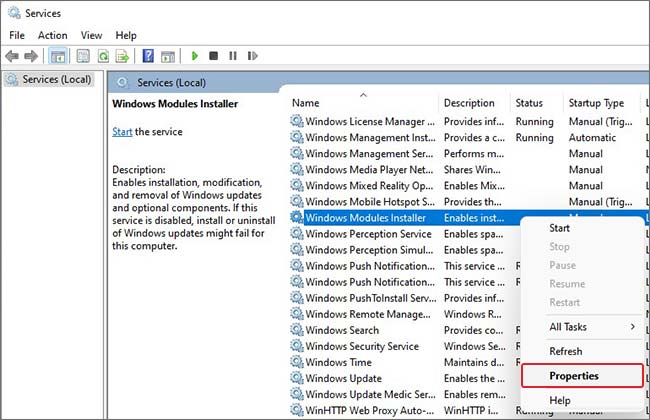
- Under the General tab, select Manual from the Startup type drop-down list.
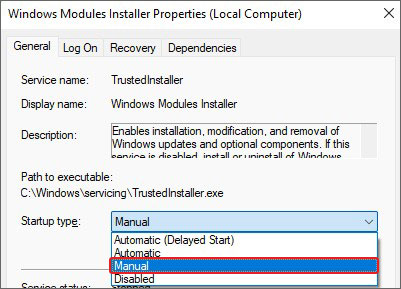
- Now, click Start > Apply under Service status to save the changes.
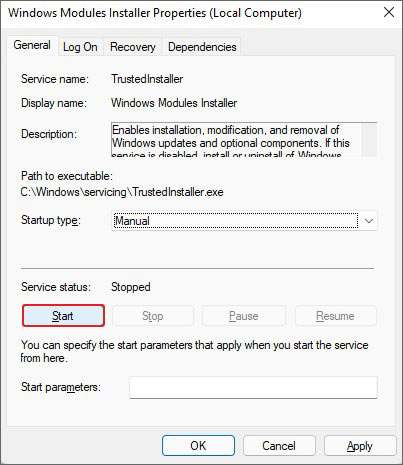
- Finally, close the Service console and see if you can run the system file checker without error.
#2 Start TrustedInstaller Using the Command Prompt
If restarting the TrustedInstaller from Service Console didn’t work in your favor, you can do it using the command prompt. Follow the steps below:
- Press Windows + S to access Windows Search.
- Type CMD and select the Run as administrator option.
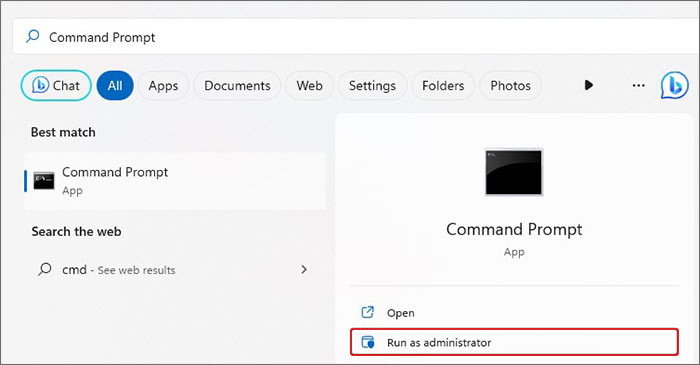
- In the elevated CMD window, type sc config trustedinstaller start= auto command and hit Enter. This command will set the Windows Modules Installer service startup type to Automatic.
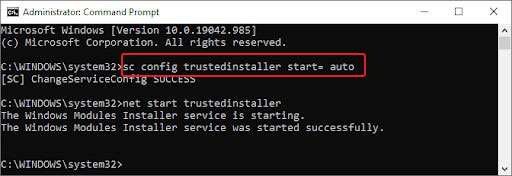
- Once done, you’ll see a ChangeServiceConfig SUCCESS message on the screen.
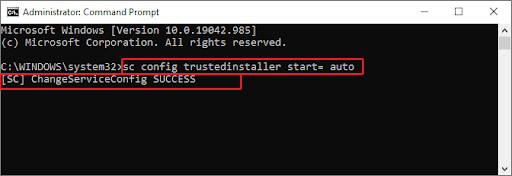
- Now, type the net start trustedinstaller command and press Enter.
- Once the process is completed, run the SFC command to check if the problem is resolved.
#3 Enable Safe Boot
You may also encounter this system error due to a service or application conflicting with the System File Checker utility. You can enable the Safe Boot and see if you can run SFC:
- Access Windows Search (Windows + S) or Run (Windows + R) dialog box and type msconfig to open System Configuration.
- Go to the Boot tab, click Safe boot, and then choose the Minimal option. Finally, click OK.
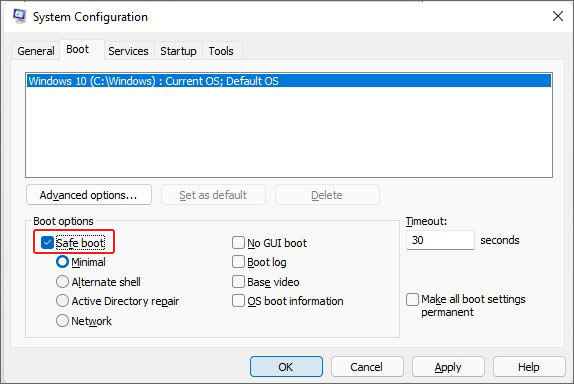
Restart your system and run an SFC scan to see if the problem is fixed.
#4 Run DISM Command
In some cases, users have been able to fix the error by running the DISM command before the SFC scan. DISM (Deployment Image Servicing and Management) is a Windows built-in tool to service and prepare corrupted or broken Windows images, including the images used in Windows RE and Windows Setup. Follow the given steps:
- Open Command Prompt (CMD) and run it as administrator.
- In the elevated cmd window, you type DISM /Online /Cleanup-Image /RestoreHealth and hit Enter.
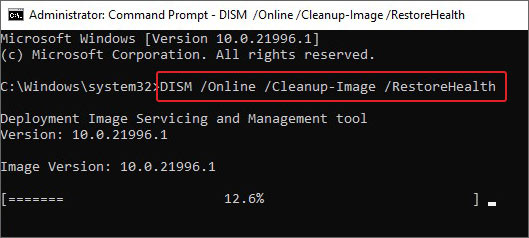
Wait for the scan to complete. Once done, see the results. If there are any instructions to follow, do so. If not, you can run SFC/Scannow command and see if the error is fixed.
#5 Add a TrustedInstaller Expandable String Value to the Registry Editor
This could be your last resort to fix the error. But be careful as meddling with the Registry Editor is not recommended very often, except for errors such as, Code 19, Restart to Repair Drive errors, or fixing Broken Registry Items.
Additionally, incorrect modifications can wreck your system and put your data at risk. Therefore, ensure that you have a backup of your system data. Once sure, you can add a TrustedInstaller Expandable String Value to the Registry Editor with the following steps:
A. Find TrustedInstaller ID and Sub-Folder in File Explorer
- Open File Explorer with Windows + E and navigate to C:\Windows\Servicing\Version path.
- You’ll see a folder named 10.0.219XX.X. This is your TrustedInstaller ID. Copy the folder name to your clipboard.
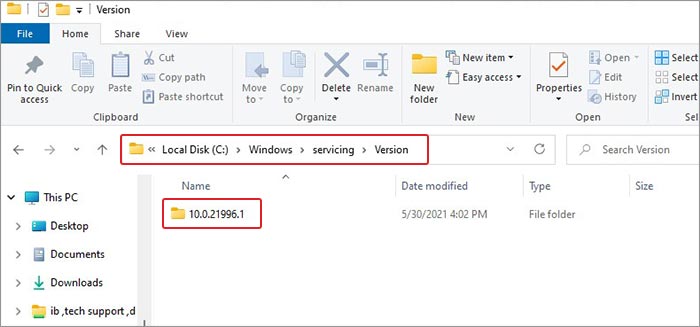
- Now, navigate to the C:\Windows\WinSxS path.
- Afterward, locate the following, depending on your CPU.
x86_microsoft-windows-servicingstack_31bf3856ad364e35_{TrustedInstaller ID} (32bit Windows)
amd64_microsoft-windows-servicingstack_31bf3856ad364e35_{TrustedInstaller ID} (64bit Windows)
- In the above-discussed sub-folder name, TrustedInstaller ID is the name noted previously.
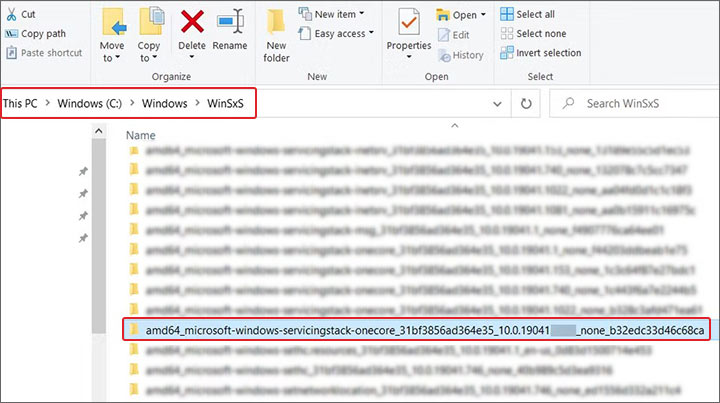
- Copy the folder name and path to the clipboard or notepad.
B. Create Expandable String Value in Registry Editor
Now that you have the required details, add a new expandable string value in the registry editor.
- Open the Run dialog box, type regedit, and hit Enter.
- Now, copy-paste the following address and hit Enter.
HKEY_LOCAL_MACHINE\SOFTWARE\Microsoft\Windows\CurrentVersion\Component Based Servicing\Version.
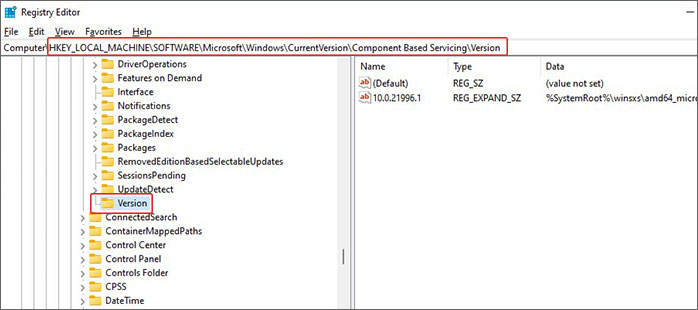
- Now, right-click on the Version, and select New > Expandable String Value.
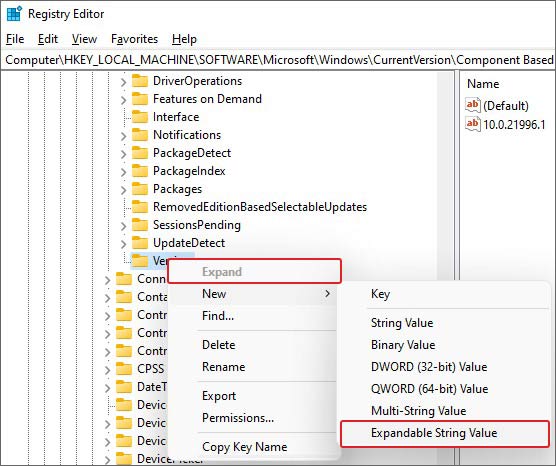
- Rename the value using TrustedINstaller ID. Next, double-click on the newly created value and enter the folder path as given below:
%SystemRoot%\winsxs\amd64_microsoft-windows-servicingstack_31bf3856ad364e35_10.0.19041.1XXX_none_7e3d47227c694b34
- Ensure that you use %SystemRoot% and trim C:\Windows from the folder path.

- Click OK to save the changes and close the editor window.
- Now, reboot your system and see if the issue is resolved.
All these methods have been helpful for users stuck with this error. You can try the solutions and see which works best for you. However, remember that there may be a risk of losing data while modifying Registry entries. Always backup your system data or keep a Windows data recovery software handy to recover deleted or lost data.
People Also Ask
What is TrustedInstaller?
TrustedInstaller.exe is a Windows Modules Installer service that constantly checks for available Windows updates and installs, removed, and modifies them and other system components. You can locate it in C: Windows\servicing.
How do I force a system repair?
You can force repair your system using the Windows built-in Startup Repair utility. Follow the given steps:
- Boot your design using the Windows installation media.
- When you see the Install Windows screen, click Next > Repair your computer > Troubleshoot.
- Afterward, select Advanced options > Startup Repair.
- Once the process is done, reboot your system.
Can SFC fix a blue screen?
Corrupted, missing, or damaged system files are common reasons for blue screen errors. You can boot your PC in Safe Mode and run SFC/scannow command through Command Prompt. SFC (System File Checker) replaces the wrong versions of the files with the correct ones, thus fixing the error.
Can I recover data after facing Windows Resource Protection Error on my system?
Yes. You can use a powerful data recovery software, such as Stellar Data Recovery to recover data. This DIY software efficiently recovers data from formatted, corrupted, or error-affected Windows PCs and storage drives.
Was this article helpful?
YES2
NO




